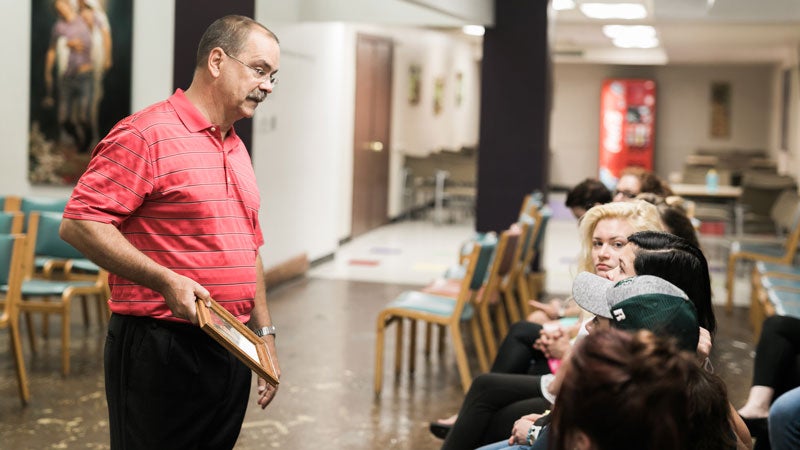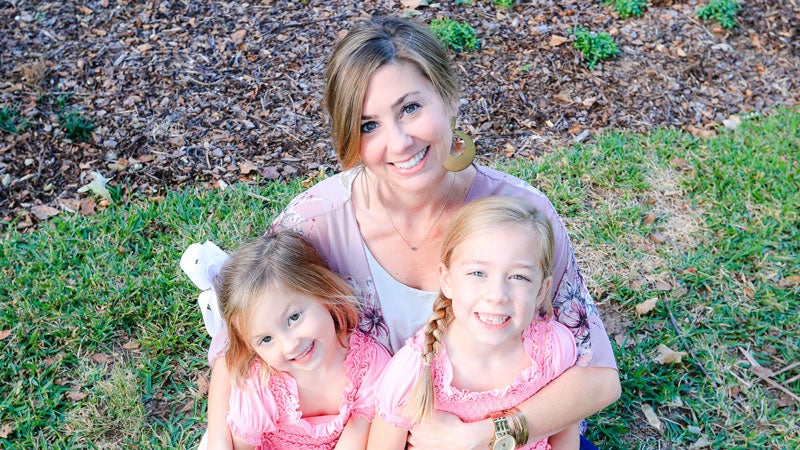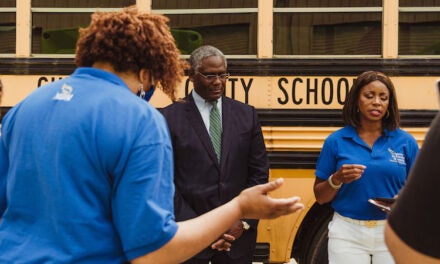Tom Dooley was in first grade when he first saw a picture of a microscope in a third-grade classmate’s textbook at his rural school in Kansas. With that, it was decided—he wanted to become a scientist when he grew up. And indeed Tom has made his way from the farm where he was raised to laboratories all over the country. What he didn’t imagine then or for years to come though was that he’d become a writer—and a dad who lost his son to drug addiction. Tragedy has re-directed him in ways he wouldn’t trade, too, into a mental health researcher and a pastoral figure for women coming out of drug addiction.
“It’s like a giant fish hook was put in my jaw, and that God had said, ‘Tom I am taking you in a different direction,’” Tom explained to us over lunch at Red Lobster on Highway 31, just a quick drive from the home where he and his wife, Laura, raised their four children, including their youngest, Thomas.
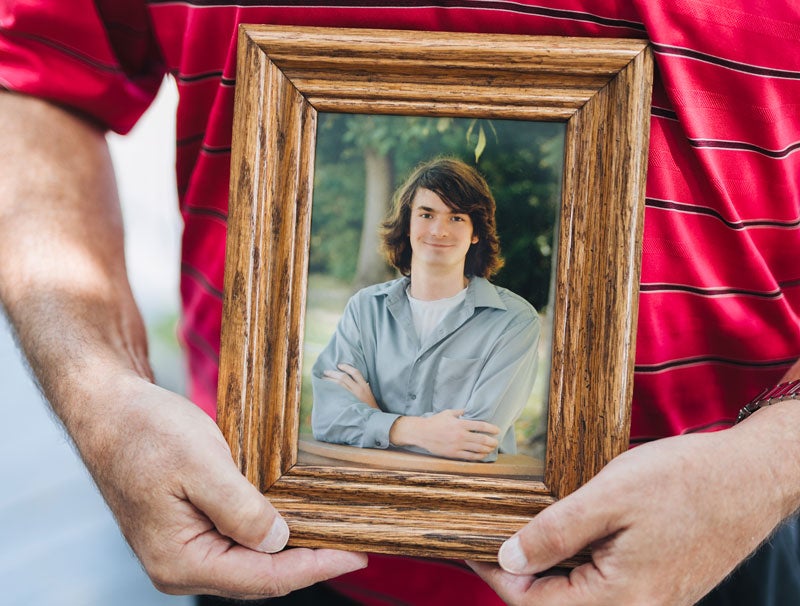 Tragedy
Tragedy
Growing up, Thomas was eclectic and quirky, earning the nickname “PyromanTom” for his love of fire, firecrackers and explosions. He was not afraid to make his own style statements with rabbit fur and bobby pins in his long shaggy hair, and he built what is probably the only backyard Indian Tandoor oven around at his parents’ house. He was thoughtful, compassionate and sensitive, with a carefully tuned radar to befriend anyone who felt abandoned.
But with adolescence came a deep-harbored secret in his life. “For many years I didn’t know that inside he was living in a hellish repetitive obsessive compulsive disorder carnival,” Tom recounted in Thomas’ eulogy. “He thought that was an embarrassing shameful thing and that he wasn’t normal.” His parents eventually took him to a psychiatrist who prescribed him Klonopin and Xanax to cope with his anxiety, but the drugs didn’t help. “I think they hindered him,” Tom recounts. “They turned him into a zombie in high school, so he was lethargic and slept through classes.”
Somehow Thomas managed to separate that part of his life from his friends though, and only those who knew him best knew his struggles, struggles that would take on a new form after he was prescribed a pain killer after his wisdom teeth surgery just before his graduation from Vestavia Hills High School. “We later learned that upon experiencing that (opioid) his anxiety went away and for the first time in his life he felt normal, the way other non-anxious people experience life,” Tom recounts.
It wasn’t until several years later that Tom and Laura learned where this incident had led Thomas. One night in July 2015 they received a parents’-worst-nightmare call from DCH Regional Medical Center in Tuscaloosa where Thomas was a student at the University of Alabama. He was in the emergency room in a near-death state. When Tom and Laura arrived, the emergency room doctor was forthright. “How long has your son been an alcoholic?” he asked. “He isn’t that I know of,” Tom replied. “How long has your son been a drug addict?” the doctor asked. “He isn’t that I know of,” Tom replied again.
As his parents came to learn, the pain killers Thomas took after his wisdom teeth surgery brought on the onset of his opioid addiction, starting with prescriptions and later leading him to street opioids like heroin and fentanyl, the latter of which is extremely potent and the main driver behind most of today’s drug-related deaths.
That night Thomas had overdosed on fentanyl on top of drinking at a party at his apartment. He laid on the bathroom floor for 16 hours immobile before he was taken to the hospital. Medically, he shouldn’t have survived. But he did. “His life was divinely spared in spite of him by a combination of medical attention and a lot of prayer,” Tom says. “God divinely spared his life.”
Over the next six months, Thomas learned to walk and use his hands again. But his anxiety didn’t go away, and his old friends were still there. With time he returned to opioids. Thomas was never alone in this either. If you look at the demographics of people with opioid addictions, many have anxiety disorders that seem to only be relieved by opioids.
Through it all Tom was always encouraging his son in positive directions. “I kept reminding him of Proverbs 13:20: ‘He who walks with wise men will grow wiser, but the companion of fools will suffer harm,’” Tom says. “I kept warning him that if he hangs out with the same friends they will bring him back into the gutter again, and they did.”
But in October 2016 something dramatic happened, something dramatically good—what Tom calls a “dramatic spiritual deliverance of darkness.” “In more than a decade it was the first time my son was normal, in the sense that he was like our innocent 11-year-old son. He was loving, and that darkness was lifted off of him through prayer,” Tom recounts.
Tom still vividly recalls a particularly poignant moment when Thomas hugged his dad and cried out, “Dad, I love you.” Tom replied, “I love you too, Thomas.” Then Thomas said, “Say it again, Dad. Say it again!” And he did. “It was as if he hadn’t been able to realize that I genuinely loved him for the past decade, although Laura and I had bent over backward for him,” Tom recounts.
Again, Tom warned his son to stay away from his old friends. “I told him the next time he returned to it he would be dead,” Tom says. In February 2017 Thomas became ill and wasn’t thinking right, and his friends offered to take care of him. Two days later Tom found his son’s body cold and lifeless in a chair in their home. He was 24.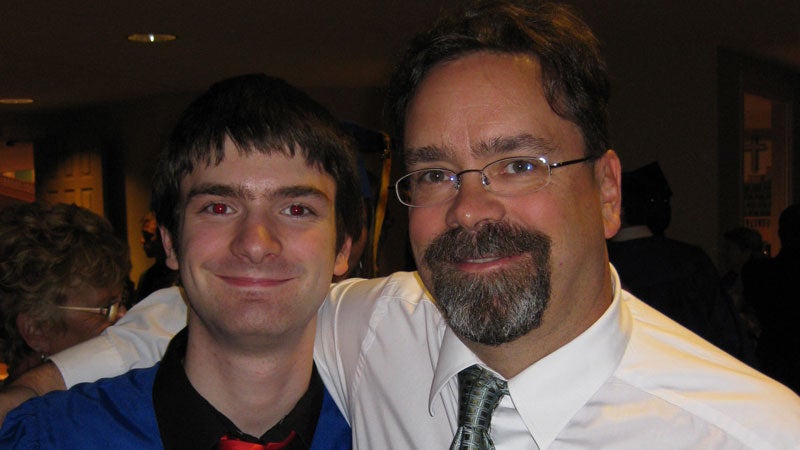
Redemption
For all of his 24 years, Thomas’ journey was interwoven with his father’s professional path. Armed with a PhD in molecular biology from Indiana University, Tom did cancer research in London and then worked in drug discovery in the Upjohn Company before starting to bridge academia with entrepreneurship. Just after Thomas was born, Tom moved his family from Texas to Birmingham to work as an endowed chair for Southern Research. They settled in Vestavia Hills, where he and Laura’s three older children Isaac, Catherine and Jeannette would go on to be active on the award-winning high school math team, setting the ground for all three of their careers in math or computer science.
As Tom went on to start two pharmaceutical and biomedical companies, IntegriDerm and ALtruis, in 1999, he began to think about how the active ingredients in existing anxiety medicines typically produce tolerance, dependence, abuse and addiction. He knew that wasn’t right, that someone needed to develop something to replace benzodiazepine drugs like Xanax with a new product that would be fast-acting, effective and non-addicting. And he would think about how to solve this unmet medical need for more than a decade.
It was in 2013, two years before Tom would learn of his son’s opioid addiction, that a scientific “lightbulb moment” came to him. Psychiatry had long been focused on using a single active ingredient to address anxiety pharmaceutically, but what if he re-purposed two safe active ingredients without abuse potential instead? One day he sat down and wrote out all the symptoms of a panic attack: anxiousness, fear, avoidance, an upset gastrointestinal system and a racing heart. He parsed them into two bins and thought through a solution for both.
To address the cardiovascular symptoms of a racing heart, he could use a beta blocker like Atenolol that blocks the effects of adrenaline for the treatment of hypertension. To address the anxiety symptoms of the central nervous system, he could use motion sickness medicines like Scopolamine.
And so as Thomas was recovering from his 2015 overdose, his father was already working on patenting a new class of medicines that would address one of the serious roots of his son’s difficulties: an anti-anxiety drug that was intended to be non-dependent and non-addictive. In 2016, Tom was awarded the first of three U.S. patents for marrying the two types of active ingredients, a beta blocker and a motion sickness medicine, in drug combinations.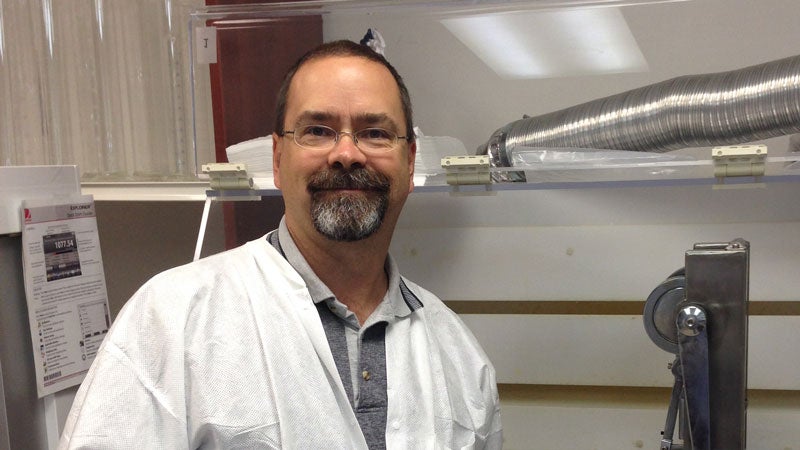
He went on to prototype the invention, now named PanX®, through a compounding pharmacy, and today has published five clinical reports on patients as proof-of-concept that it works. Studies have looked at the patients of Dr. Ashley Benjamin, a psychiatrist in Los Angeles, and those of Dr. Ty Thomas, founding doctor at Alabama Pain Physicians in Vestavia on Acton Road. The clinical reports demonstrated that PanX® is fast-acting and effective with no ingredient known to have abuse potential. With that completed, Tom is now working to queue up clinical trials for an eventual FDA approval.
While his hands are still active in the pharmaceutical world, Tom also spends much of his time with people, seeking to bring about redemption from his family’s tragedy. He speaks to civic leaders and first responders about the opioid crisis, including a talk this spring at a Freedom from Addiction Coalition breakfast at Vestavia Hills United Methodist Church, but his passion perhaps comes out most poignantly when he warns high school students of the dangers of synthetic opioids, that what’s on the street today can kill you the first time you try it.
“A large part of what I am trying to do with students is produce the fear of God in them,” he says honestly. “I also talk about the good things about my son and how (drugs) took over and destroyed his life. It’s raw, and I get teary. I’m talking about what it’s like to find your son dead and to then speak at his funeral. I also tell them, ‘Don’t do to your parents what my son did to me!’”
Tom speaks to people who know firsthand what opioids can do too. After Thomas’ memorial service, a friend in the audience who works as the pastor at The Lovelady Center, approached Tom with the eulogy fresh on his mind. “When you are ready, please come,” he told Tom. “The ladies would benefit from what you have to share.” Two years ago he did. Today Tom teaches Bible studies each week as a part of the faith-based program for women coming out of incarceration and drug abuse, and he shares his own stories too.
“I was never a drug addict, I’ve never been incarcerated, I have never been arrested,” he tells the “Loveladies.” “And you might ask yourself, ‘Why are you teaching me? Because we can’t relate to one another.’ But you and I have something in common: Neither of us wanted to be in this room.” From there he listens to their stories and prays with them and shares his own of being a dad who is still processing his own pain. Many of the women he gets to know there have come out of abusive relationships and have never known a man or had a father figure they could trust. He hopes to change that.
He also likes to give the Loveladies copies of one of his three books, Hope When Everything Seems Hopeless, the second of a trilogy of inspirational books on faith, hope and love. Tom has now written the third, Pain Taught Me to Love, a set of stories of different people’s adversities in life and how they have taught them to love better, and he plans to have it published soon.
As he writes in that new book, Tom is clear that, above all, Thomas taught him to love. That’s why he spends time with the Loveladies too, as an act of redemption coming out of the pain from watching his son’s mental health and substance abuse issues. “His pain will now benefit others,” Tom wrote in his son’s eulogy. “He died having inspired a patented safer new class of drugs to treat people with anxiety. Oh, if only we had it a decade ago when his OCD problems started!”
Learn more about Tom and his ministry at pathclearer.com.

